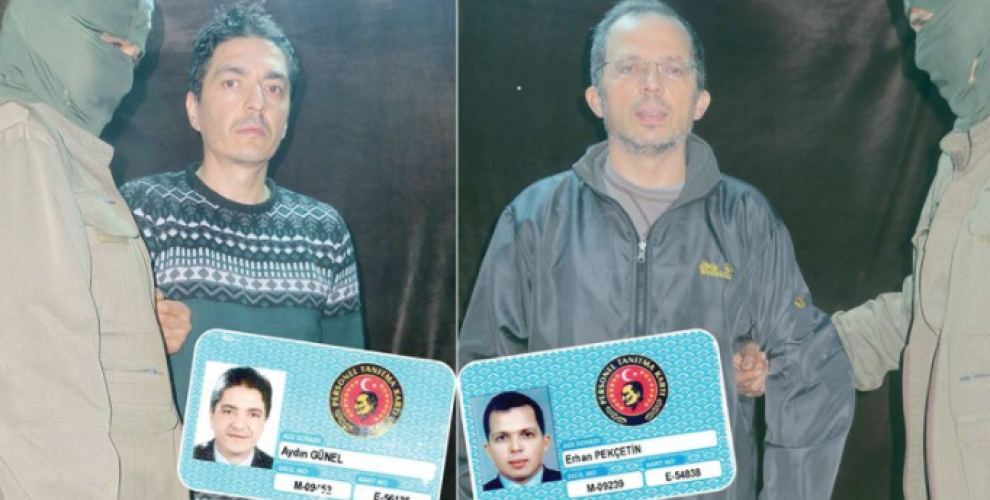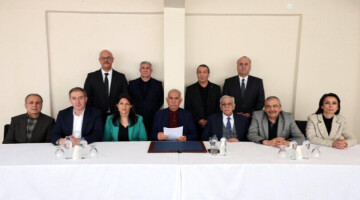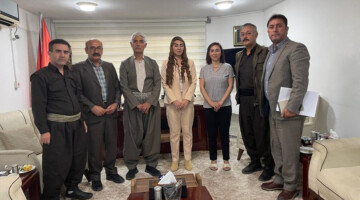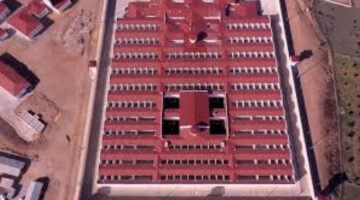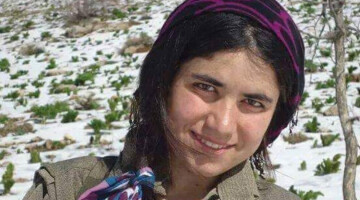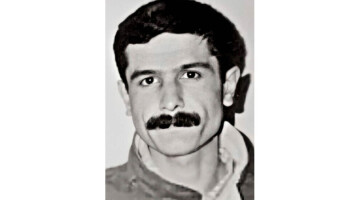New information and documents have surfaced about the two high ranking MİT administrators captured by the PKK in August near the Dukan Dam in Southern Kurdistan. KCK has made a detailed statement on the men in question on January 2. Other information and documents are expected to be announced in the coming days.
First let’s look at how the incident happened, and analyze what the MİT administrators could have said.
The operation where MİT administrators were captured was conducted by early August 2017. The passports these men had on them showed that they landed in the Sulaymaniyah Airport on August 3, 2017.
One of the captured MİT administrators is Erhan Pekçetin, and the other is Aydın Günel. According to the information in the KCK statement, Pekçetin is the “Chair of Domestic Ethnic Separatist Activity”, the most strategic branch of the MİT.
Aydın Günel is a domestic and foreign Human Resources Director in the MİT.
So, they are officers who know all information and networks of the MİT.
The purpose of these men’s visit to Sulaymaniyah was to carry out assassinations or other operations against high ranking PKK administrators.
The incident happened by early August, but the preparations took 5 months. The MİT thought they were preparing for an operation against PKK administrators through their local unit, while the PKK administration drew the MİT into the region through counter-intelligence activity. After the local MİT unit said preparations were completed and they could start, MİT administrators Günel and Pekçetin went from Ankara to Sulaymaniyah to direct the operation in person. They went to Dukan from Sulaymaniyah, because Dukan is close to Qandil. And as soon as they went, they were captured by HPG special forces units.
PKK says there is video footage of the operation they were captured in as well, but it hasn’t been made public yet.
In short, these MİT administrators were not captured when things went wrong as they were going in for an operation. They were captured in a planned counter-operation. That is what is understood from the developments and statements.
So what happened after this operation?
In the operation, of course it wasn’t just the two MİT administrators who were captured. The local unit was captured as a whole.
After their capture, neither the PKK nor Ankara issued any statements. Ankara first sent messages to the PKK through the PUK and demanded the release of these men. PKK didn’t release them, and told them that the investigation continues. The PUK’s insistent attempts didn’t come to fruition. Then, Ankara deported PUK representative Behroz Gelali. PUK announced that this deportation was related to the captured MİT administrators, and that was how the public learned of the incident.
When the Ankara administration failed to achieve results through the PUK, they asked three separate international forces for help. The visits Hakan Fidan made to the capitals of three large states were connected to this. The appeals of these states to the PKK didn’t produce results either. In the end, Ankara demanded these people to be turned over to a third party, but that didn’t happen either.
The statements issued recently show that the information these people provided is of utmost importance, and can expose all the anti-PKK activity of the MİT.
Here is how:
These people and all the MİT units and personnel they had ties with in Southern Kurdistan have been exposed, and most of them have been captured. So the number of MİT members the PKK has captured isn’t one or two or three, there are many more. The anti-PKK activity of the MİT in Southern Kurdistan has collapsed.
Information provided by the two MİT regional officials captured in Cizre last year (identities not announced) and the MİT members captured in Dukan were compared and clarified. KCK states that these efforts took five months, and that is why the announcement was made late.
In short, these people provided very detailed information on the MİT’s activity in the South, in Rojava, in the North and in Europe. This information has been recorded. The PKK administration has launched operations in light of this information and carried out several operations in the last 5 months. At a certain point, they announced the matter to the public.
We don’t know how much of these operations will or won’t be made public.
But the most important part of this operation against the MİT is the Paris Massacre.
On January 9, 2013, Sakine Cansiz, Fidan Doğan and Leyla Şaylemez were murdered in Paris. The hitman was documented to be working for the MİT. Kurds had no doubt that this massacre had been planned by Ankara. But the details the MİT administrators have provided have brought the massacre to light in all aspects.
As it can be remembered, in 2014 a document and a voice recording by the MİT on the Paris Massacre had been published. This document had signatures of 4 MİT administrators. One of them is S. Asal. According to the information provided by the MİT administrators captured by the PKK, this S. Asal is Sebahattin Asal. This man is a state “official” who was present in the meetings with the PKK and the meetings in Imrali along with Muhammed Dervişoğlu.
Sebahattin Asal was always present in the Imrali meetings as the “official”. He introduced himself as “Ozan” in some of the meetings.
Sakine Cansiz, Fidan Doğan and Leyla Şaylemez, were not killed by “those who want to interrupt the peace process”, they were killed by the interlocutors of this process in Ankara.
The “peace process” itself was an operation. An operation to disband through meetings. And on one side of this process was the meetings, while on the other there were attacks. The committees who went to Imrali and Oslo were also planning murders in Paris and Qandil at the same time.

